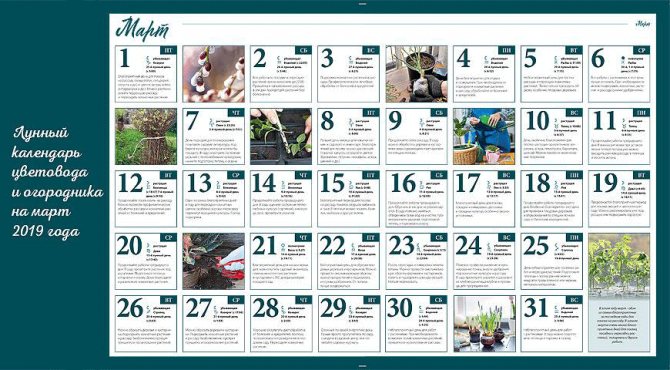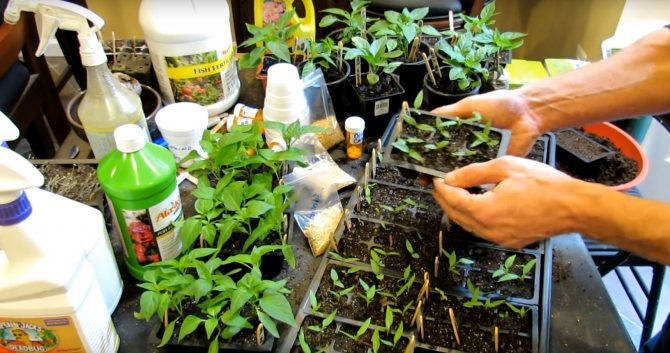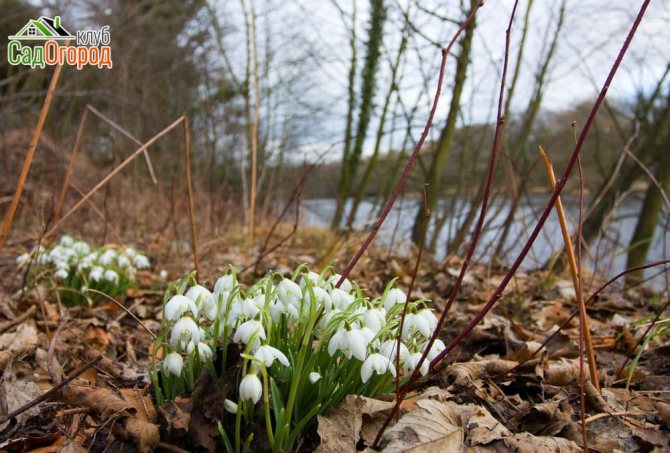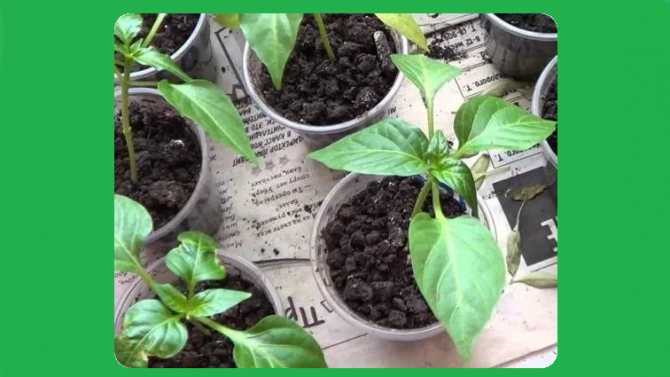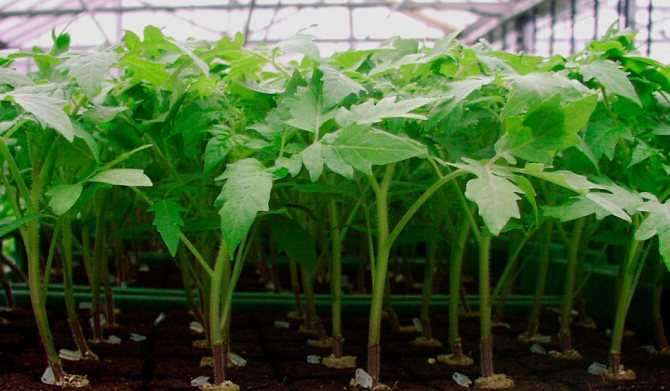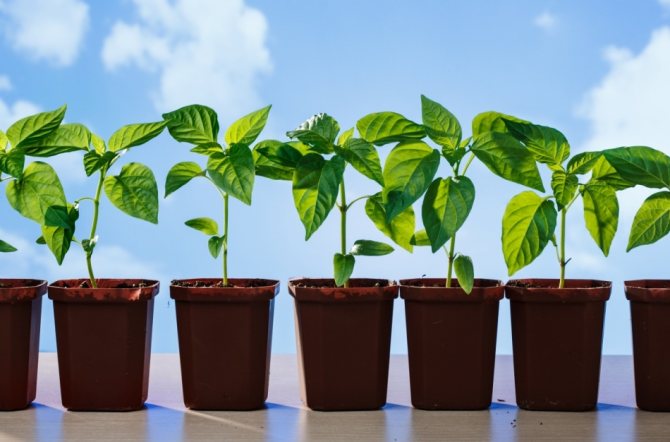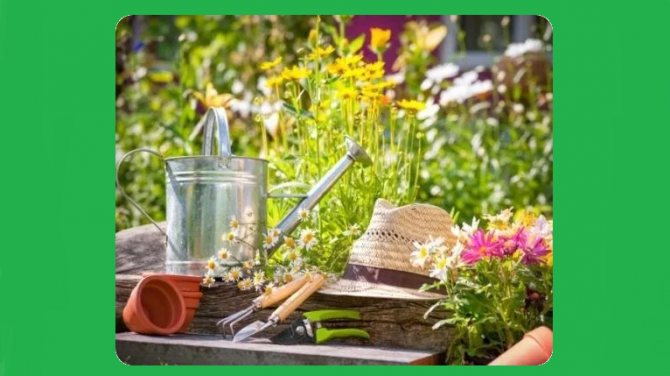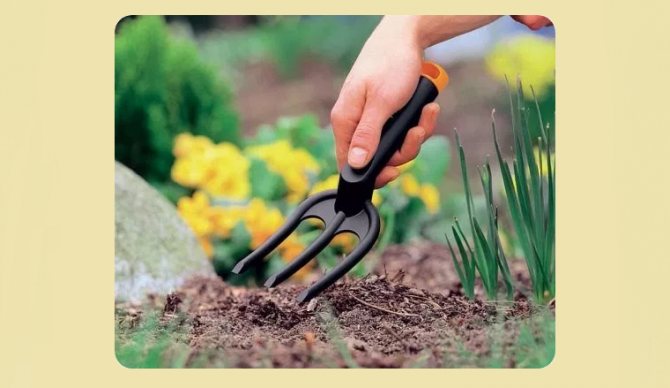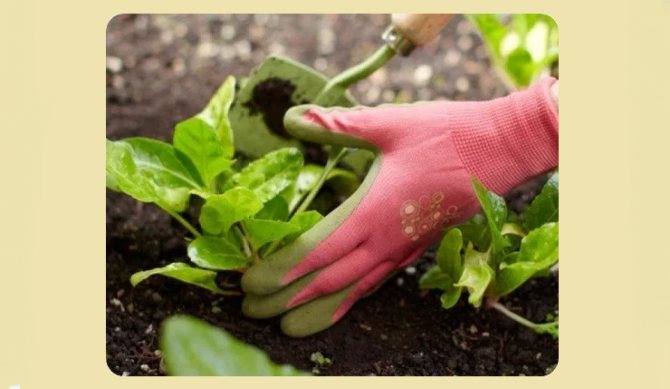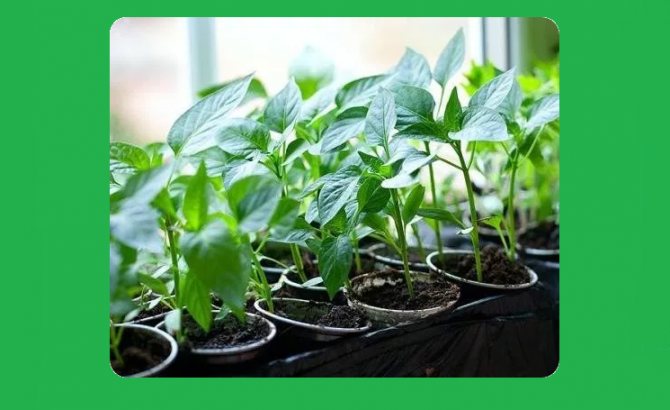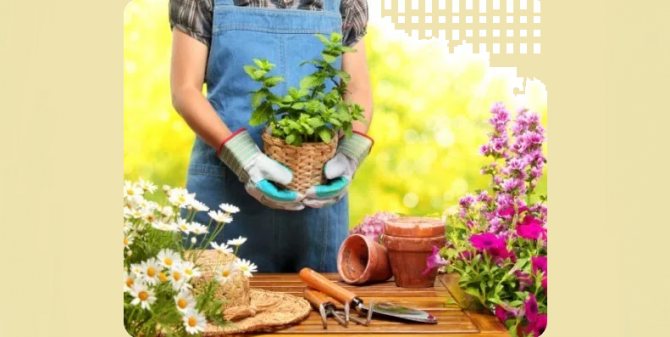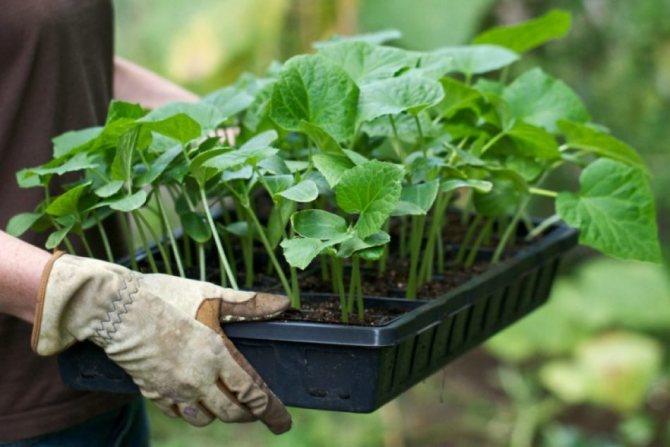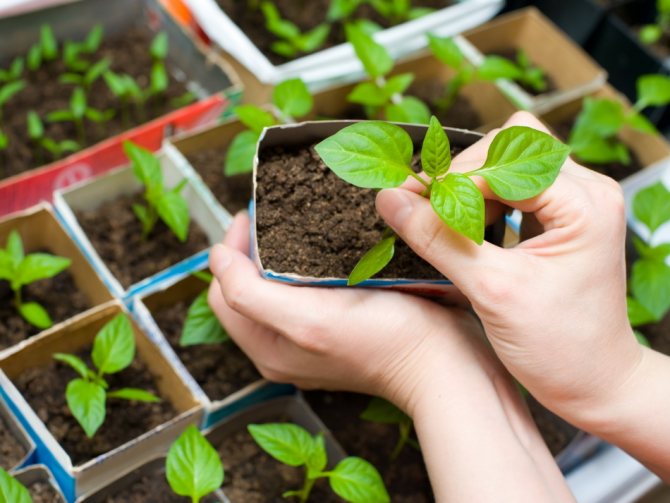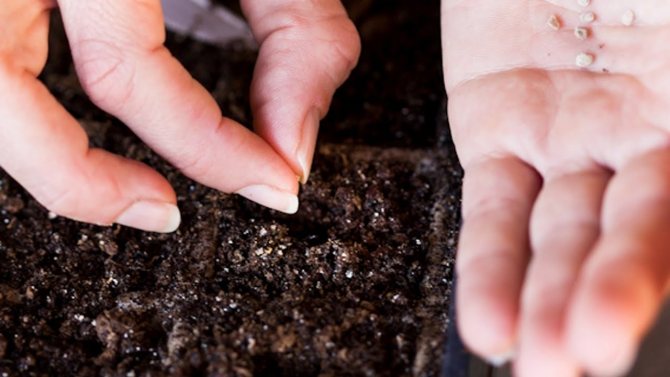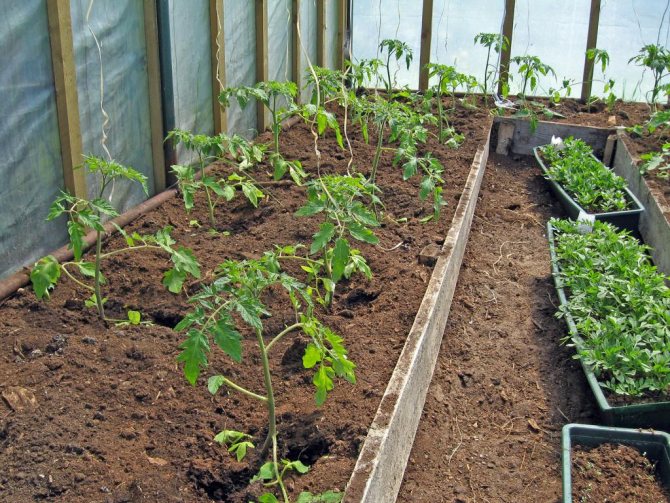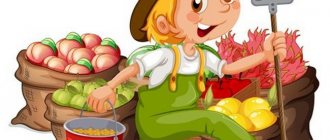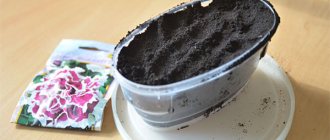The lunar sowing calendar for March 2020 will allow the summer resident not to be mistaken with the planting of his favorite crops. Thinking about crops is already in February - the hot spring time is approaching. The moon affects the success of the enterprise - this fact was known to our ancestors. So why not find the optimal planting schedule? We begin to search for favorable periods for field work.
What is the lunar calendar and why is it needed
This satellite of the Earth influences many things, one of the most famous phenomena is the ebb and flow of the seas. The moon also affects the growth of plants. Therefore, many gardeners, in order to get a rich harvest from their garden, actively use it and follow certain requirements for how long certain operations can be carried out. The lunar calendar 2020 for planting pepper seedlings looks like this:
- January - 31;
- February - 1,2, from 8 to 12, 15 and 24;
- March - 3.4, 10 - 14, 17, 26;
- April - 2 - 4, 9, 13, 16, 25;
- May - 7 - 10, 14, 15;
- June - 4, 5, 12 - 14, 18.
Do not plant plants during the full moon phase. During this period, a slowdown in vegetative growth occurs. Plant growth is enhanced during the growing lunar phase. The gardener's lunar calendar contains auspicious and unfavorable days, on which dates it is recommended to plant, water, fertilize and perform other manipulations.

Moon phases.
Gardener's lunar sowing calendar for March 2019
March 1 - the waning moon in Capricorn. Planting small root crops. Ventilation of storage facilities. Building birdhouses.
2nd of March - the waning moon in Capricorn. Planting carrots, beets. Treating trees with insecticides. Feeding birds.
March, 3rd - the waning Moon in Aquarius. Fertilization with organic vegetable crops. Laying residues in compost pits. Purchase of seeds of new varieties.
4 march - the waning Moon in Aquarius. Application of mineral fertilizers for berry bushes. Weeding the beds. Irrigation of seedlings.
the 5th of March - the waning Moon in Pisces. Planting of small root crops, beets, root parsley, carrots. Pest control. Purchase of garden tools.
March, 6 - New moon in Pisces. Unfavorable day for gardening and gardening.
7 march - the growing Moon in Pisces. Planting cucumbers, legumes, sweet peppers, white cabbage, red cabbage, cauliflower, perennial flowers, bulbous and bulbous flowers. Pruning shoots. Grafting of cuttings.
March 8 - the growing moon in Aries. Fertilization with mineral compounds of crops. Digging the soil. Place organic residues in the compost pit. Drip irrigation of indoor plants.
If winter recedes early, then help the snow to melt by loosening it, and if it is protracted - on the contrary, do not rush to open the snow.
9th of March - the growing moon in Aries. Introducing organic matter for shrubs. Thinning of seedlings. Purchase of the necessary seeds.
10th of March - the growing Moon in Taurus. Planting lettuce, herbs, eggplants, tomatoes, fruit trees, annual flowers. A pick of seedlings that have sprung up. Repair of homestead buildings.
11th of March - the growing Moon in Taurus. Planting squash, tomatoes, zucchini, red cabbage, pumpkin, cucumber, legumes, fruit bushes, perennial flowers. Pruning damaged branches. Loosening of not melted snow.
12 march - the growing Moon in Taurus.Planting greens, sweet peppers, lettuce, eggplants, squash, cauliflower, white cabbage, squash, pumpkin, annual, bulbous and bulbous flowers, fruit trees. Budding trees. Transplanting perennial shrubs.
March 13 - the growing moon in Gemini. Top dressing with organic fertilizers of plants. Place residues in the compost heap. Watering crops in the greenhouse. Digging the soil.
March 14th - the first quarter in Gemini. Fertilization with mineral compounds of trees. Cultivation of the soil. Purchase of seeds.
March 15th - the growing Moon in Cancer. Planting tomatoes, zucchini, sweet peppers, squash, cucumbers, pumpkins, annuals, bulbous and bulbous flowers, white cabbage, cauliflower, fruit trees and bushes. Sanitary pruning of shoots. Grafting cuttings to fruit trees.
March 16 - the growing Moon in Cancer. Planting lettuce, cucumbers, tomatoes, greens, eggplants, red cabbage, legumes, perennials, bulbous and bulbous flowers, fruit trees and shrubs. Removing damaged branches. Seedling picking.
March 17 - the growing Moon in Leo. Fertilization with plant organics. Preparing compost pits. Moistening the soil under vegetable crops. Digging the beds. Purchase of seeds of new varieties of vegetables.
March 18 - the growing Moon in Leo. Top dressing with mineral fertilizers. Loosening the soil on the site. Sharpening garden tools.
19 march - the growing Moon in Virgo. Digging new compost pits. Loosening the soil under berry crops. Purchase of garden tools.
20th of March - the growing Moon in Virgo. Feeding organic crops. Irrigation of plants. Purchase of flower seeds.
21 March - Full moon in Libra. Postpone any work until another day.
March 22 - the waning Moon in Libra. Planting beets, carrots, parsley root. Buying birdhouses. Additional protection of tree trunks from burns.
23 march - the waning moon in Scorpio. Planting small root crops. Spraying crops from pests. Scaring away rodents from the site.
March 24 - the waning moon in Scorpio. Planting carrots, beets. Stratification of flower seeds. Fence renovation.
March 25 - the waning moon in Sagittarius. Planting small root crops, root parsley. Garden equipment repair. Preparing the beds for sowing.
26 March - the waning moon in Sagittarius. Planting beets, carrots. Spraying crops with insecticides. Checking vegetables in storage.
March 27 - the waning moon in Sagittarius. Sowing root parsley, carrots, beets. Feeding birds. Repair of summer cottages.
28 march - the third quarter in Capricorn. Planting small root crops. Treatment of berry bushes from pests. Loosening of snow that has not yet melted.
March 29 - the waning moon in Capricorn. Planting beets, small root crops, carrots, root parsley. Treatment of crops with insecticides. Covering fractures of trees with garden pitch.
30th of March - the waning Moon in Aquarius. Fertilization with mineral complexes of plants. Preparation of organic residues for composting. Thinning of crop seedlings.
March 31 - the waning Moon in Aquarius. Feeding with organics of plants. Loosening the beds. Drip irrigation of indoor plants. Weeding seedlings. Seed material purchase.
How the moon affects landing
The lunar calendar indicates that the best days for planting pepper are the days when the Moon is in the signs of Pisces, Scorpio, Cancer. The very first step in growing seedlings is the contact of the seeds with water. Especially if they are pre-soaked. For February, the lunar calendar looks like this:
- The moon grows from February 1 to 8
- Full Moon - February 9
- The moon decreases from 10 to 22 February
- New Moon - February 23
- The moon grows from February 24 to February 29
Favorable days for sowing pepper seeds, depending on the climatic features and the growing method, are:
- February - 1-3, 14-20, 28, 29;
- March - 4-6, 8, 11, 12-14, 21-23;
- April - 1, 2, 9-11, 17-20;
- May - 2-4, 6, 9-12, 15-22, 29-31;
- June - 2-4, 7-9.
The gardener does not always have the opportunity to do this operation on these days. To do this, you can plant seeds according to the phases of the moon - full moon, new moon, growth and decrease.
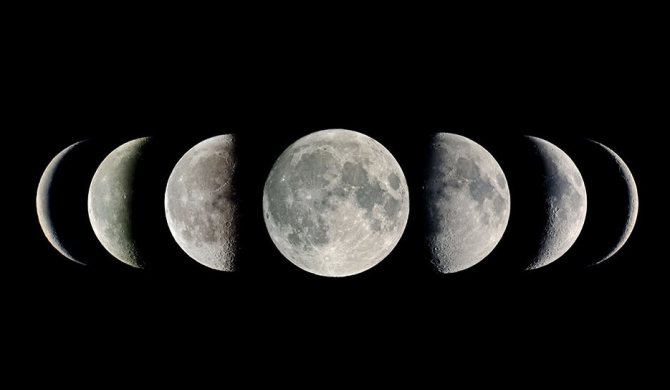

Lunar phases.
If you don't have a calendar at hand?
When working in the garden or in the country, as well as when growing seedlings, you need to be aware of the change in the phases of the moon. So the New Moon leads to an outflow of vitality into the roots of plants. That is, the dates for planting seedlings are coming in 2020. After all, that's when the seeds germinate better.
- New Moon requires careful attitude to the roots of seedlings. Therefore, transplanting and loosening are prohibited on these days. This information is contained in the calendar of planting seedlings for 2020, its table is publicly available.
- During the waxing moon, the flow to the tops increases. Therefore, experienced gardeners recommend planting plants in which the aerial part plays an important role.
- The full moon leads to the fact that the juice content in the stems, leaves and fruits reaches the maximum value.
- The last phase is the waning moon. It creates the most favorable conditions for the growth of underground parts of plants. Therefore, there are favorable days for planting root crops.
What a gardener needs to know about the lunar phases
The lunar phase is of prime importance. The moon constantly revolves around our planet, approaching and moving away from us. The satellite exerts its maximum force on the Earth when it approaches it. On such days, plants actively absorb moisture and fertilizers from the soil, and sap flow is accelerated. With the distance of the Moon from the Earth, its attraction decreases by about 50%. The largest distance occurs in the middle of the rising or falling phase. When approached, the plant enhances the development of the stem and foliage. In practice, you can see that, with a full moon and a new moon, they can rise overnight. However, not all plants are equally affected by the moon.
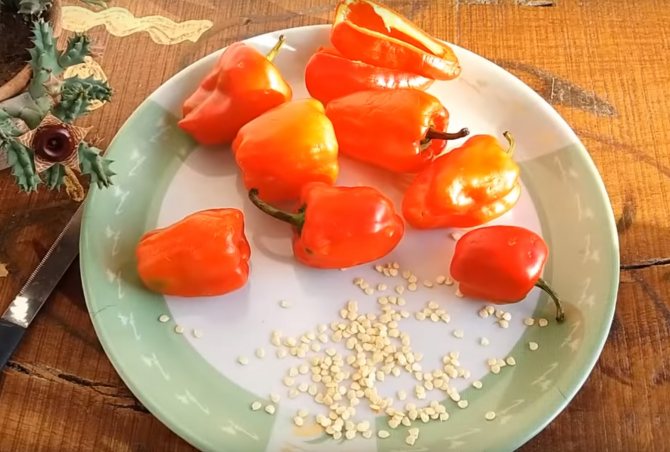

Extraction of bell pepper seeds from its fruits.
Summer residents and gardeners in different phases do certain manipulations:
- New moon. It is considered an unfavorable time for sowing, grafting, planting, loosening the soil.
- Waxing Crescent. The sap and moisture in the plant moves from the root to the top of the plant. During this period, you need to do the transplant and planting.
- Full moon. Weeds, diseases, pests are being controlled, not the best time for pruning and pinching.
- Decreasing phase. You can not carry out any work related to the roots
Related material: How to germinate seedlings at home: all methods and methods
It is not recommended to engage in planting work, dive seedlings one day before the new moon and full moon, but weeding the beds and removing weeds will be effective. Guided by these recommendations, you can plant pepper on seedlings at the right time.
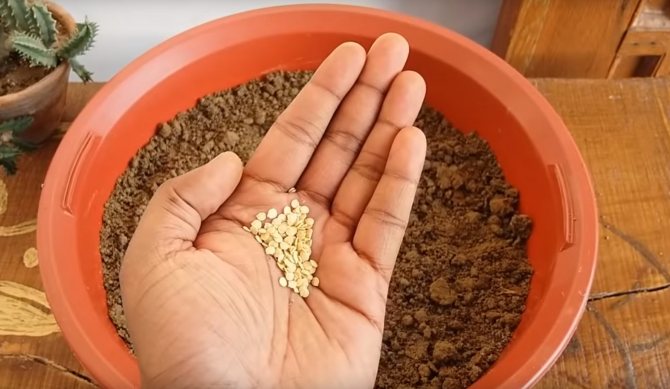

Germinating bell pepper seeds
Auspicious days
You can find out when to plant pepper according to the lunar calendar by focusing on favorable days on which you can engage in agricultural work. The most favorable days of the lunar calendar are:
Favorable days for sowing pepper for seedlings:
- In January - 1, 5, 6, 8, 27, 29.
- In February - 1, 2, 3, 5, 7, 8, 25, 28, 29.
- In March - 1, 3 -7, 27, 28, 29.
- In April - 1, 2, 4-7, 25.
These dates are indicated taking into account the different climatic regions of our country. Landing times in sunny Krasnodar will differ from Tyumen. Bell pepper seeds are sown when the moon is growing, you cannot do this on a new moon and a full moon. Such seeds will give weak shoots, and, therefore, when transplanted into the ground, some of the seedlings will simply die, and the rest will yield less than expected yield.
Related material: How to properly grow seedlings
Bad days
Unfavorable days for germinating seeds of pepper seedlings are:
- In January - 2-4, 7-13, 20-21 and 28-30.
- In February - 9-11 and 21-23.
- In March -9-10, 19-21 and 24.
- In April -8, 15-17 and 23.
These days, you should not engage in germination of seedlings. To more clearly imagine the entire favorable and unfavorable cycle of work by months for 2020, I will give the following table.
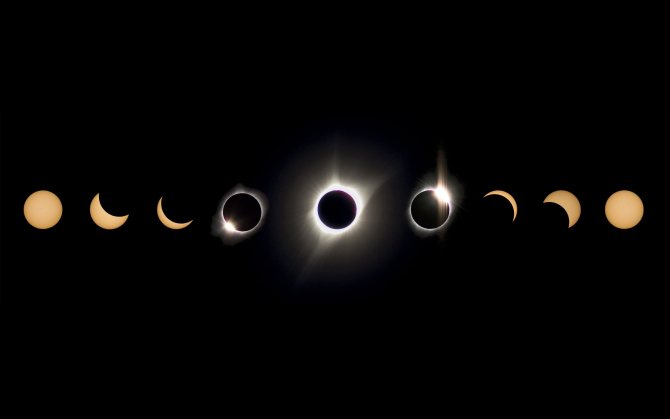

Planting seedlings in March 2020
All actions related to seedlings (transplanting, picking) should be planned on the 10th, 12th and 16th. This does not apply to the northern Russian regions. If we move away from astrological predictions, then it is better to postpone the complex of measures with seedlings to April (even in the south of Russia). Give preference to biennial plants with strong roots.


Summarize. March is a fairly cool month. The winter cold has not yet receded, the soil is not suitable for planting in all regions of the country. Use the lunar calendar wisely. The main thing is common sense and knowledge of the climatic conditions of your area.
What they do in February for the garden and garden
Garden work depends primarily on weather conditions. This month, snow retention is carried out, throwing it under the trees, tamping it down. If there are temperature fluctuations, it is necessary to observe the trees. Some summer residents during this period carry out pruning of branches on apricot, cherry, sweet cherry. Cuttings can be made from them by placing them in the water at home. The main works that are carried out in February are:
- Pruning fruit trees if the temperature is below 8 degrees below zero. Old rhizomes are destroyed. Hazel, gooseberry and currant are trimmed.
- Pruning ornamental shrubs. It is carried out according to the requirements for a specific type of plant.
- Growing of some annual plants, vegetable seedlings.
- Protection of plants in the garden from frost, if it is damaged.
- It is planned how the garden will be planted in the spring.
This month is considered a period in which nothing important happens in the garden. Owners of a large number of fruit trees have a lot of trouble. Efforts should be directed towards a favorable and safe wintering of plants.


Pruning trees in February.
Pros and cons of planting in March


If a gardener is thinking whether to sow tomatoes for seedlings in March 2020, it is correct to know the main advantages of this time of year. The danger of early sowing is the possibility of getting small tomatoes due to lack of sun. There are certain reasons why the pros recommend planting this month:
- The vegetable manages to gain weight and give away the fruits until it gets colder.
- Low temperature conditions do not allow weak shoots to dry out.
- Maximum number of good days for seed.
- Enough light.
- Seedling material is compact.
However, there are also disadvantages to early disembarkation:
- Weak tomato disease resistance.
- The problematic nature of care measures due to the need to monitor the temperature regime, transplants and a garter.
Lack of early planting in the risk of returning night frosts. Seedlings may die due to the cold. The soil in March has not yet warmed up as expected. At the right time, the grown seedlings are considered the basis for an excellent harvest, so overgrowing affects the tomatoes. Not only being late in the periods of carrying the plant culture (by 50-60 days), but also other moments can provoke negative consequences. There are several reasons:
- Little light.
- Excess moisture.
- Unsuitable temperature conditions.
- Oversupply of fertilizers.
Such seedlings may have low immunity.
On a note! If tomatoes are not hardened before planting in the garden, they will not survive.
For 2 hours, it is necessary to leave the plants outside in conditions of high moisture levels and a comfortable temperature regime.Within 7 days, they are quenched several times, increasing the amount of time. After a week, the seedlings are kept outside for 24 hours, and then transplanted into the garden.
How to plant peppers correctly
How to plant pepper seedlings according to the lunar calendar is a question that arises among young summer residents. This vegetable should be planted during the growing phase, but not at the full moon. Bell peppers are planted for seedlings already in February-March, specific dates depend on the region.
In the southern regions, seeds should be germinated between February 10 and early March. In more northern regions, this work can begin between early March and early April. It is important to know that it takes at least 2.5 months to get high-quality seedlings. After this time, a strong seedling with a developed root system will form.
Early planting in the ground is carried out in warm regions in May. Such seedlings are actively developing and will give a good harvest. Some summer residents begin to germinate seeds as early as January, respectively, they are planted earlier, usually in a greenhouse. Before you start planting ready-made seedlings, check with the lunar calendar for the given month when this procedure will take place.
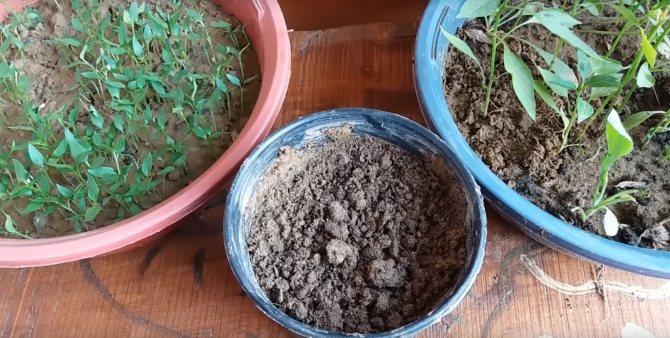

Young seedlings of pepper.
Sowing pepper seeds for seedlings
The preliminary and first stage of germination of pepper seeds is their preparation, the features of which depend on the specific period. Bell peppers can be grown in greenhouses, greenhouses or outdoors. It takes about 50 days from laying seeds to receiving seedlings for early varieties, for later - 70 days.
It is recommended to soak the seeds for 30 minutes in a weak solution of potassium permanganate. This procedure will kill pathogens. It is also important to prepare the right soil. The most optimal composition is six liters of ready-made seedling soil and one liter of sand. The soil should be at room temperature so as not to damage the seeds of this crop.
Peat tablets and cups, coconut washers and other inventions of gardeners are well suited for germinating seedlings. A comfortable temperature for this culture is 20-26 degrees and a sufficient level of lighting. Given the lunar calendar, it is better to perform this operation in the growth phase and favorable days. The lunar phases affect the vegetation of the plant by slowing it down or speeding it up.
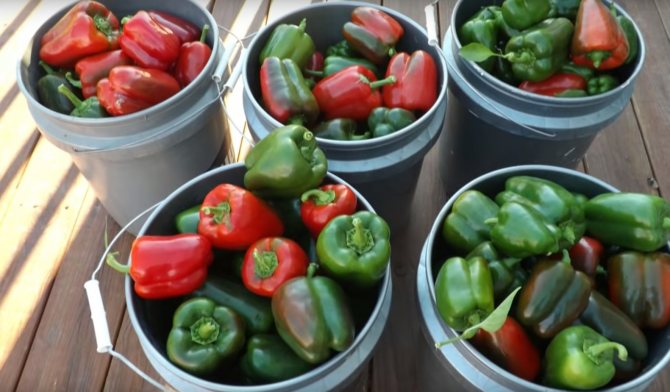

Pepper harvest.
Care for pepper seedlings after germination
Pepper seeds must receive certain rules of care in order to get good shoots and harvest in the future. The main ones are:
- humidity level;
- temperature;
- watering.
Related material: How to germinate seedlings at home: all methods and methods
The seeds will do great in greenhouse conditions. To create them, you need to cover the container with seedlings with film or transparent glass. The main procedures for caring for seedlings are:
- watering seedlings;
- seedling lighting;
- feeding seedlings;
- pinching pepper seedlings;
- how to dive pepper correctly.
It is better to water with a spray bottle, avoiding drying out and waterlogging of the soil. This method of watering will not damage young plants, which are very whimsical. Fertilizers are applied according to the recommendations on the seed package. Here it is indicated what is better to feed and in what time frame.
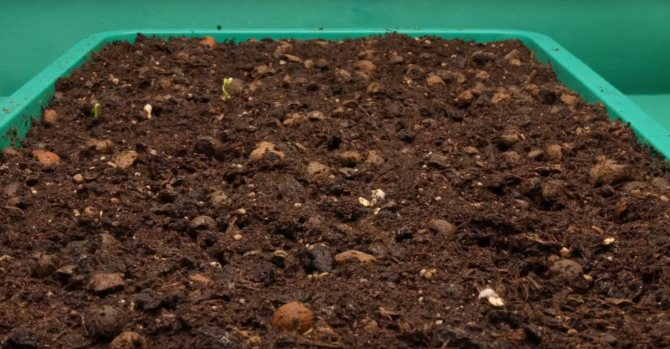

The first sprouts of pepper.
Planting flowers by seeds for seedlings
In addition to vegetable, fruit and berry crops, gardeners decorate their "plantations" in a special way. For this, flower crops are chosen, but they do not always get the result.
Reason: untimely germination of seedlings or its absence. After all, not all flowers have good germination. While work is underway on planting vegetable crops, attention can be paid to flower species.
Carnation herb
There are many varieties of carnation, but grass is sown in March. Pre-prepare the soil (the presence of sand and peat is required).
A pick is carried out with the appearance of full-fledged 2-3 leaves. When warm days are established, the plant is transferred to the beds in the front garden or alpine hill.
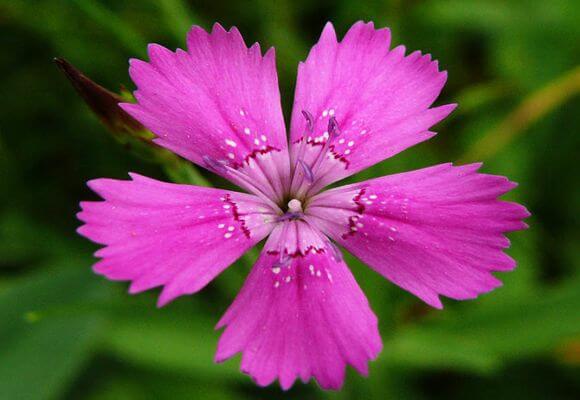

Iberis
The plant is used as a honey plant. Recommended for planting in vineyards and for pollination of other crops. Not afraid of drought, flowering duration - 1.5 - 2 months. Sowing is carried out at the end of March - in the first decade of April.
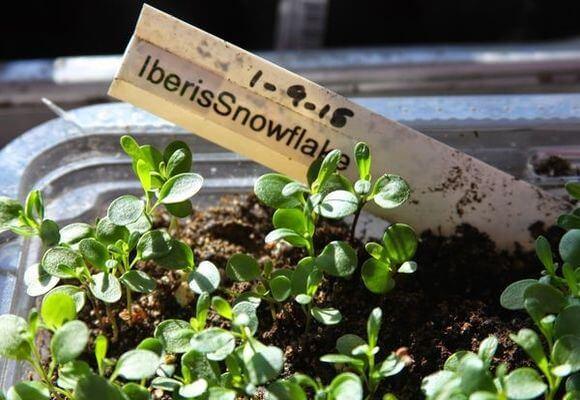

Scented tobacco
Only early tobacco is sown for seedlings at the end of March. Recommended temperature at the initial stage: 20-22 degrees above zero.
After the formation of a sprout with 2-3 leaves, the temperature regime is reduced by 3-5 degrees.


Echinacea
The beauty was planted not so long ago on their own land plots, but she deserves attention, a number of explanations for care.
Planting seedlings in a greenhouse
Pepper seedlings are best carried out according to the lunar calendar for 2020. This culture is thermophilic, and does not survive even slight frosts or temperature drops. At temperatures less than 13 degrees Celsius, sap flow in this culture stops, and the growth and development of this plant also stops.
It can be dangerous to plant in open ground early, without the use of covering material, since there is a possibility of death of young seedlings. In this matter, climatic factors and possible frosts in early spring should be taken into account as much as possible. Planting pepper seedlings in the ground is carried out between June 1-10. Peppers are planted in the greenhouse in the first half of May - May 1-15.
Recommendations for the care of seedlings of vegetables and flowers in March
Since crops are distinguished by their exactingness to temperature, humidity and light, it is recommended to group them according to the requirement. At the initial stages of seedling development, this is not necessary: literally all the seeds are under the covering material.
The first distribution actions begin after the pick. Such a transplant helps plants to develop fully. Separate containers must be disinfected.
Closer to the transfer to a permanent place, seedlings of vegetables, flower crops can be combined again for hardening, watering, feeding. All actions are planned in advance, and then recorded in the gardener's calendar.
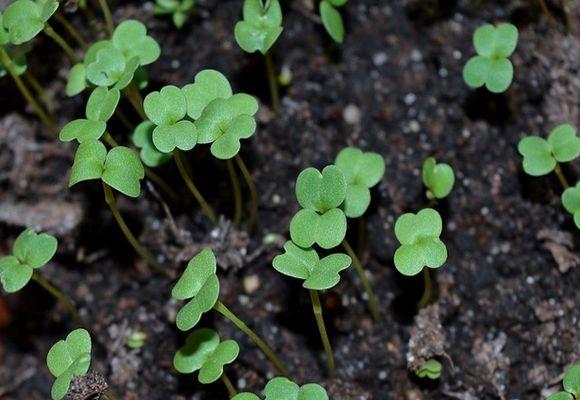

Auspicious days by region
The best lunar days for sowing pepper are when the moon is in the constellations of Cancer, Scorpio, Pisces, Capricorn. In February 2020, the growing phase falls on February 26-29. At this time, it is necessary to sow seeds for seedlings. 28 and 29 are good dates for planting low-growing varieties. If it is impossible to do this in February for a number of reasons, this operation must be carried out in the first half of March.


Bell pepper bush.
The best periods for planting indoor and flower crops
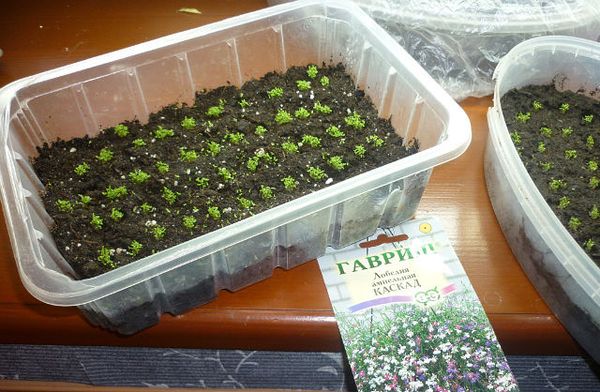

Now read:
- Lunar calendar for February 2020 for gardeners ...
- Lunar seed calendar for January 2020
- Gardener lunar calendar for may 2020
- Lunar calendar of a gardener and a gardener for 2020 ...
- Florist's calendar for may 2020
Table of the lunar calendar of the florist and gardener for March 2018.
| Auspicious dates | Moon phase | Zodiac sign | Plant |
| 1 (until 08:59) | Growing | Cancer | Flowers from seeds of nasturtium, aster, petunia and others. |
| 1 (from 08:59) | Virgo | ||
| 5 (from 16:24) 6 7 8 (until 01:04) | Decreasing | Scorpio | Rhizome, tuberous and bulbous flowers (including indoor), such Anigosantos, Codonopsis, Ixia, Gladiolus, Lashenalia, Antigonon, Canna, Gloriosa, Ophiopogon, Hymenokallis, Narcissus, Dahlia, Zephyranthes, Ledeburia, Kuskulya , Hyacinth, Lily, Vallota, Drimiopsis,, Veltgeimia, Gabrantus, Hippeastrum, Clivia, Colchicum, Dierama, Zantedeskia, Ifeion, Zameokulkas, Calendula, Babiana Stricta, Griffinia, Margarita and Phyrylatezia, others |
| 20 (from 04:08) 21 22 (until 08:31) | Growing | calf | Flowers from seeds of nasturtium, aster, petunia and others. Decorative and indoor vines Monstera, Syngonium, Philodendron, Stefanotis, Scindapsus, Cissus, Hoya, indoor ivy, Mandeville, Thunbergia and other species. |
| 24 (from 11:54) 25 26 (until 14:46) | Cancer | ||
| 28 (from 17:31) 29 30 (until 20:53) | Virgo | Flowers from seeds of nasturtium, aster, petunia and others. |
Planting dates by varieties
There are many varieties of pepper, but the most popular of them are several.
Related material: Growing cilantro: how to plant and care for it
Variety "Asti"
It is a cold-resistant variety that is cultivated throughout the country, including in its cold regions. The variety is undersized, its maximum height is only 75 cm, and it is also early maturing. Its growing season is 100 days and is ideal for seedling propagation. The mass of the fruit can fluctuate around 250 grams, the wall thickness is 1 cm.
"Antiquary"
The variety is considered a high-yielding variety with early fruit ripening. The flowering period begins 70 days after hatching. Ripeness begins at about 105 days, biological at 150th. The fruits have a deep red color. The "antiquarian" is also characterized by a long fruiting period and yield stability.
"Boyarin"
The bushes rarely reach a height higher than 60-70 cm. Biological ripeness occurs about 140 days after the appearance of the first shoots. The average fruit weight is 90-160 grams, with a high content of vitamin C, wall thickness is 8 mm.
Vesuvius
Vigorous plant 80 cm high with sturdy stems. It has a high fruit formation, is resistant to many diseases of this culture. Fruit weight can reach 200g.
"Blondie F1"
The variety has bushes of medium height, the fruits themselves are cuboid, ripening on the 60th day after transfer to the ground. Fruit weight is about 200 grams. The variety is resistant to temperature extremes, fungi, and takes root well in soil with high acidity.
"Annushka"
The fruits are sweet and yellow in color. Differs in drought and heat resistance. The weight of the ripe fruit is 130 gr, and the average yield is 10 kg / m².
"Emelya"
Many gardeners consider this variety to be the best for the conditions of the middle lane. The height of the bush is 70cm. The first harvest appears on day 100 and is considered early ripening, but the walls of the fruit are not thick enough.
"Cardinal F1"
An early hybrid variety with technical fruit ripening at 90 days. The variety is resistant to rot, and the height is about 60 cm.
Related material: How to plant seedling seeds in peat tablets.
So that the seedlings do not stretch
As soon as the first loop of shoots appears, without waiting for the others to appear, a container with seedlings of peppers, tomatoes, eggplants should be immediately placed on the window and the temperature should be checked: during the day it should not be higher than 16-18 degrees, and at night about 12-14. After a week, the day and night temperature should be increased by 4-6 degrees.
Such a temporary decrease in temperature stops the growth of the hypocotal knee and prevents the seedlings from pulling strongly at an early stage of development. But do not forget that a decrease in temperature by more than 8 degrees will lead to an early disease of tomatoes with late blight, as well as to the appearance of faceted (double) flowers in them, which must be cut off at the bud stage (it is abnormally large), since such flowers grow ugly fruit from several fused together. Seeds from such fruits should not be taken, as plants with faceted flowers grow from them.
According to the manufacturer's recommendations and depending on the variety
When planning the germination of seedlings and planting them in the ground, it is necessary to take into account, first of all, where the seedlings will be planted:
- open ground;
- under the film;
- polycarbonate greenhouse.
If frosts can happen at the end of May, you need to count down for about 2 months, then mid-March. If the period of return and night frosts ends at the end of May, then it is necessary to count down by 2-2.5 months (the age of the finished seedlings) - mid-March. But we still need time for seed treatment, germination (optional) and germination. On average, this is at least 2-3 weeks.
We move aside for this period towards winter and find ourselves in the last days of February, early March.This is the approximate time for sowing pepper seeds. This is an option for open ground. If you plan to plant seedlings in a greenhouse, then you need to take another two weeks, that is, about mid-February. This calculation is suitable for gardeners in the middle belt, Moscow region.
For the Urals and Siberia, other conditions are relevant. It is warm here only in the last summer months. During this period, the ripening of the pepper should take place. Average ripening of pepper is 135 days. If ripening should take place in July, then seedling germination should be started in mid-February.
Influence of the phases of the moon on plants
Before we deal with the lunar calendar for any particular month, let's find out what phases of the moon are, and how they affect the growth of plants.
There are 4 phases in total:
- growing - starts on the 7th and ends on the 20th;
- decreasing - from 1 to 5 and from 22 to 31 March;
- new moon - falls on March 6;
- full moon - March 21.
Each phase has its own characteristics, which should be considered separately.
Growing
The waxing moon phase is divided into two parts:
- first quarter;
- second quarter.
In the first quarter, it is recommended to plant fast-growing crops, in which the aboveground part is considered edible. Grass grown under the lawn or for hay grows well.
In the second quarter, it is recommended to plant legumes, melons, peppers, raspberries, blackberries and cucumbers. In both phases, the force of attraction decreases, which allows the plants to receive more moisture from the soil. In the first and second quarters, intensified watering of plantations with plantings is recommended.
Note! The closer the full moon is, the less the stem of the plant stretches upward. This should be taken into account when planting flowers grown in pots, baskets and pots.


Decreasing
During the waning moon, the earth's gravity begins to increase, which affects the increase in soil moisture. Leaf formation begins to slow down and the emphasis shifts to root development. During this period, experienced gardeners are advised to plant seeds of plants that take a long time to germinate. Trees planted in this phase form a strong root system.
New moon
The new moon is accompanied by a decrease in plant activity. The juices begin to move more slowly, the formation stops. On a new moon, it is best to harvest root crops and prune. It is not recommended to replant or sow new areas. Seeds harvested in the new moon phase give the best shoots and take root well.
See also
Description of the tomato variety Ekaterina, its yield and cultivationRead
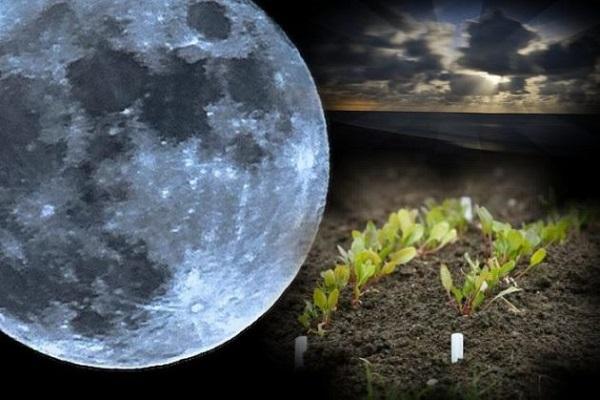

Full moon
In the full moon, the upper part of the plant, located above the ground surface, is most actively formed. The roots are poorly formed, and the influx of nutrients to them is practically absent. It is not recommended to plant crops that multiply on the site by dividing the roots. Potatoes are considered an exception. The process is going well:
- weeding;
- irrigation;
- top dressing;
- preparation of medicinal herbs.
When to dive seedlings
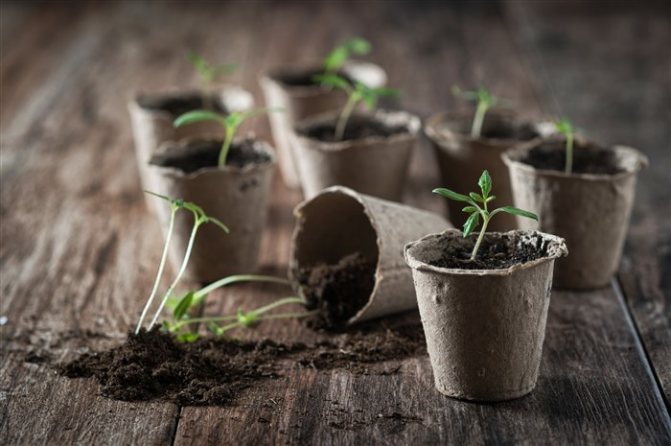

Seedling picking is carried out in the phase of appearance of 1-2 true leaves. Plants require a large area of nutrition, so they need to be transplanted into large containers with a prepared substrate. It is better to choose the days of the waning moon for this. Indeed, in this case, quick adaptation of the underground part of plants - the roots - is more important. The best days for diving seedlings are presented in Table 2.
table 2
| Culture | The luckiest days | |||
| February | March | April | May | |
| Tomatoes, peppers, eggplants | 12, 13, 19, 20 | 11, 12, 17, 18 | 13, 14 | 11, 12 20, 21 |
| Cabbage | ||||
| Zucchini, pumpkin | ||||
| Cucumbers | ||||
After picking seedlings, you can tidy up the garden and vegetable garden, cultivate the soil, plan plantings, prepare greenhouses and greenhouses. For this, days that are not suitable for sowing seeds and periods when it is better not to disturb the plants are well suited. Prohibited days for sowing and transplanting plants in the spring of 2020 are shown in table 3.
Sowing calendar for april 2020
What to plant for seedlings in April?
In April, any vegetables sprout much faster, and the seedlings are developing so actively that they need careful control. This month, you can sow not only vegetables with a long growing season, but also "early ripening" vegetables, as well as all types of vegetables that should yield a harvest closer to autumn.
In April, sowing continues for all southern vegetables - tomato, physalis, peppers, at the beginning of the month, the last crops are sown eggplant with shortened vegetation periods. True, for both tomatoes and peppers in April, the choice of early ripening and early varieties is more relevant. For heat-loving vegetables, which began to be sown back in March, the beginning of the month and the last week of April are suitable. But it is better to take advantage of any favorable day on the lunar calendar.
April - main sowing month cabbage... All types of white cabbage, kohlrabi, Brussels sprouts, broccoli, Peking cabbage, pok-choy, leafy kale - there is plenty to choose from. In April, it is important to abundantly moisten the soil before sowing and soak the seeds (you can use a contrasting one, in hot and cold water). The most favorable for all leafy and cauliflower cabbages are the middle and beginning of the month, and for cabbages - the third decade.
Only one can compete in the importance of sowing seedlings in April with cabbage cucumbers... They are most often sown in April. Soaking and treating the seeds speeds up the waiting process, while careful moisture and good lighting will allow for rapid growth.
If a zucchini and Co. are grown through seedlings, then after warm treatment and germination, the seeds are sown in April. To accelerate development melons, squash, pumpkin and zucchini (harvesting on average 3 weeks earlier) can be sown in individual containers for seedlings in the first decade or in the period from April 24 to April 29.
The influence of the moon when sowing plants on seedlings
Scientists have proven that the growth and development of crops really depends on the movements of the Earth's satellite. In pursuit of the harvest, farmers follow the movements of the planets, but not everyone understands what is happening to the plants, how the Moon changes the germination rates.
The impact of the Lunar phases on the gardener's activities:
- The new moon lasts 24 hours. The period is used to harvest weeds, dried and dead shoots. Any action on the preparation of seedlings is strictly prohibited.
- From the New Moon and for 11 days, tall and spreading crops are sown; closer to the full moon, it is recommended to plant undersized crops. When the moon is growing, it is recommended to loosen the soil and prune.
- The full moon includes 3 days. Suitable for pest control and weed uprooting. During this period, all affected cultures respond well to treatment.
- The aging moon has a length of 12 days, at this time it is dangerous to touch the roots of plants. In case of damage, the death of the sprout is inevitable. They recommend watering, fertilizing, pruning fruit trees and bushes.
How to get rid of weeds without weeding
At the end of the month, pre-grow weeds on the vegetable beds, covering the beds with an old film and securing it so that the wind does not blow away. Weeds will sprout under the film in about 2 weeks. As soon as they appear, remove the film, and "shave" the beds with a Fokin flat cutter, slightly deepening it into the soil by 1–2 cm. Instead of a flat cutter, you can use a "Strizh" weeder or a regular hoe.
Then leave them open for a day. Cut weed shoots will die. Cover with plastic again for a couple of weeks, then repeat the operation. Now there are no weeds in the top layer of soil (5–7 cm) in the garden bed.
It is important not to dig up the soil, otherwise from the lower layers you will bring up the weed seeds that are stored in the thickness of the earth, but can only germinate from a depth of no more than 7 cm. sowing with the edge of the board and sow the seeds.


